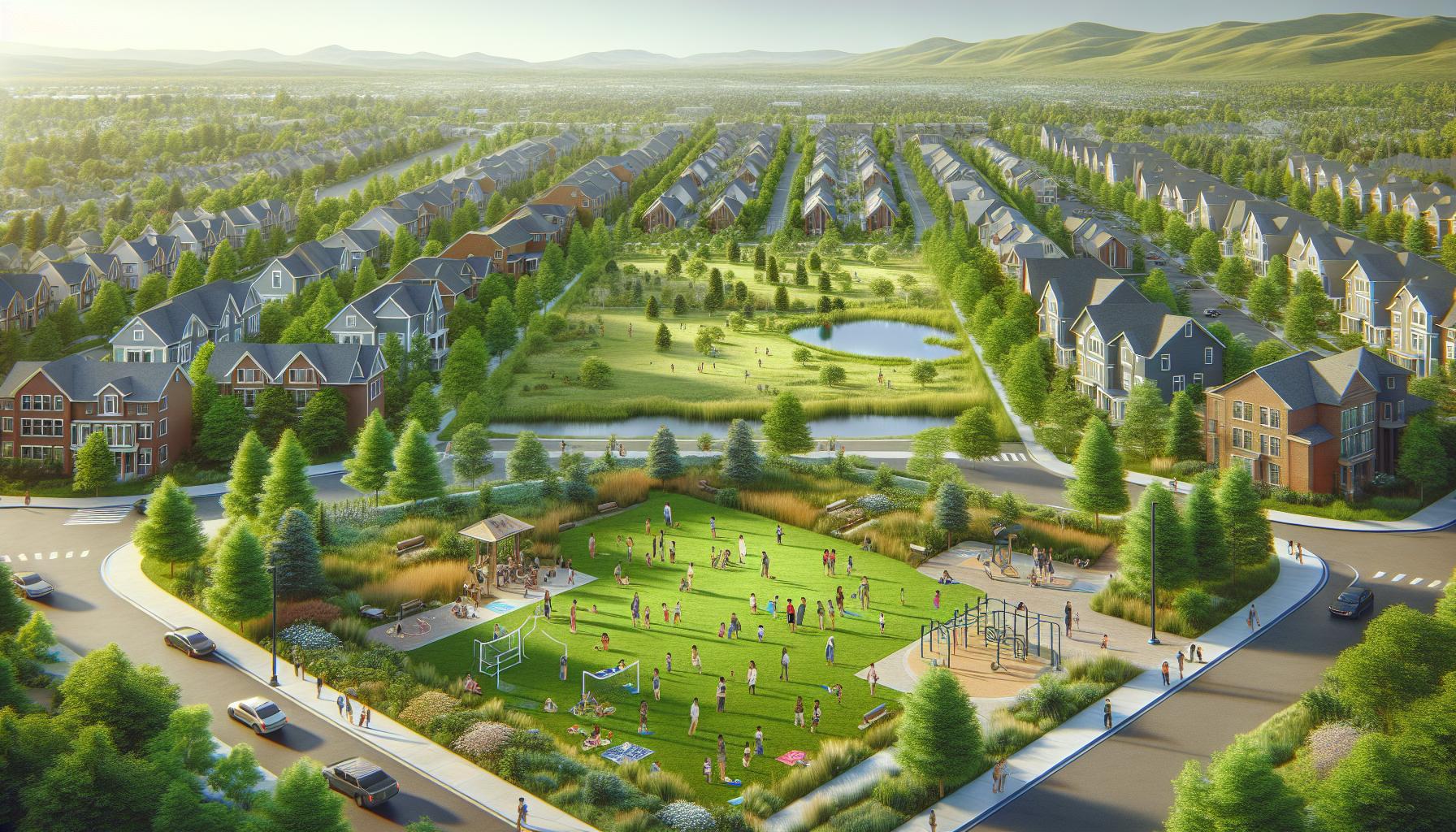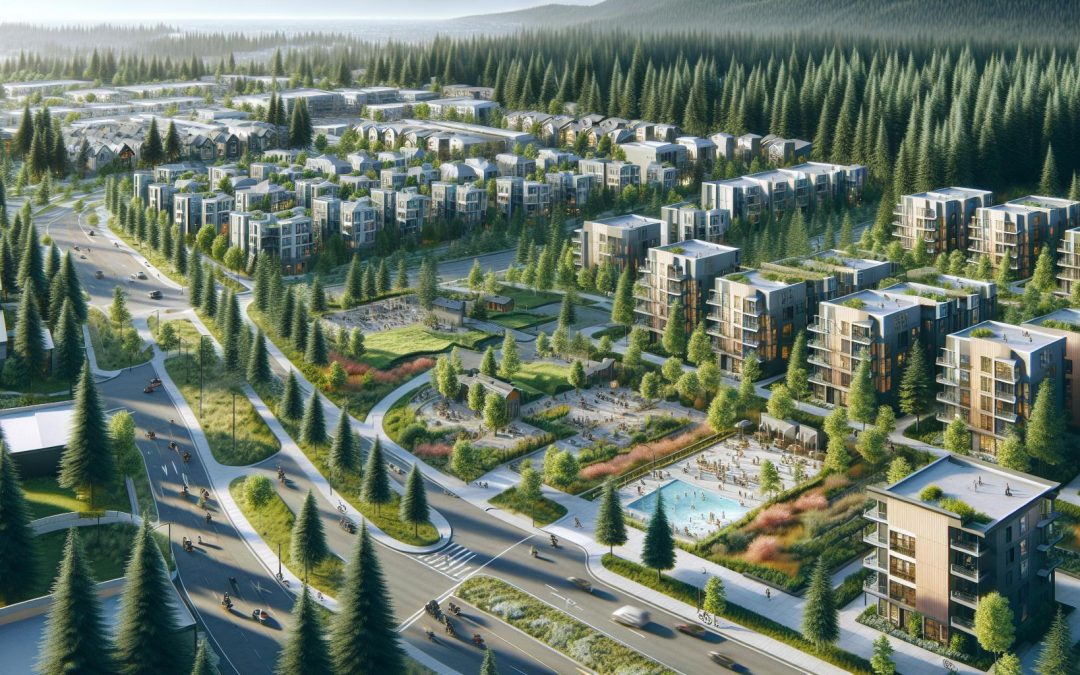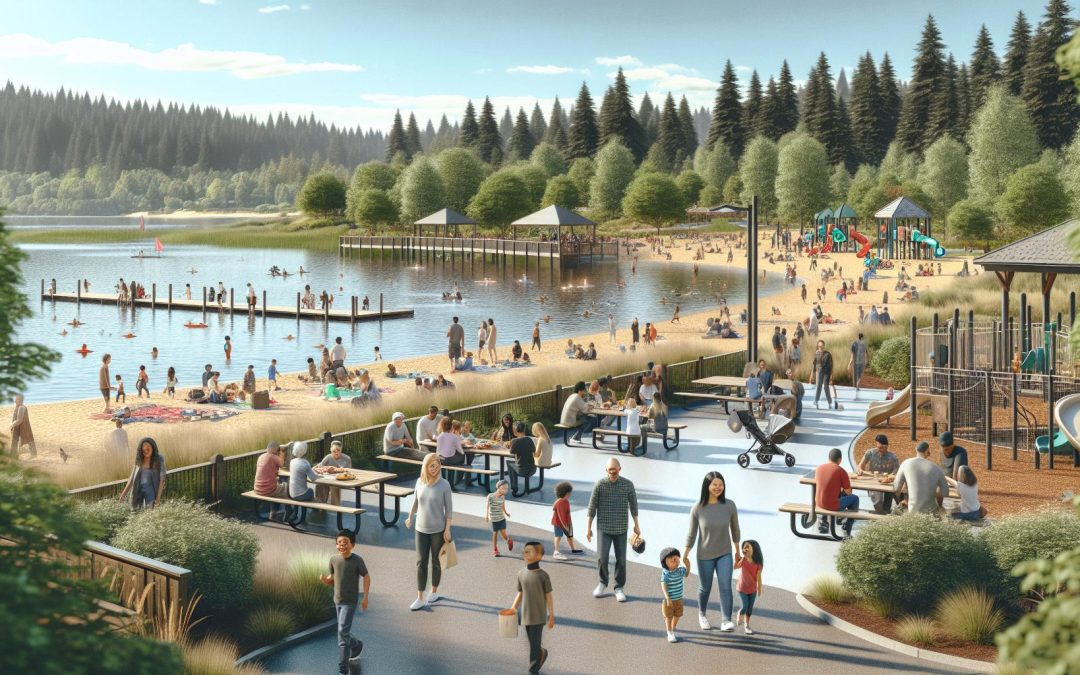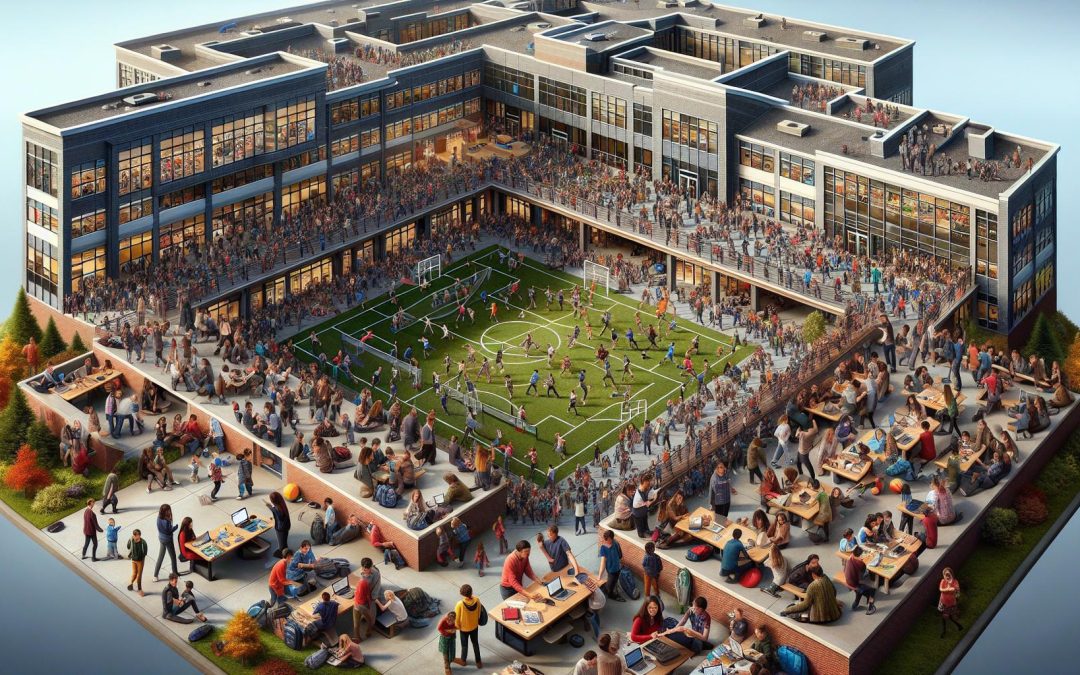I remember when Sammamish was just a quiet, rural area dotted with farms and open fields. Over the past few decades, it’s undergone a remarkable transformation into a bustling suburban community. It’s fascinating to see how a place can evolve so dramatically while still holding onto its unique charm.
As I stroll through the newly developed neighborhoods, I can’t help but marvel at the blend of modern amenities and natural beauty. Parks, schools, and shopping centers have sprung up, making it a vibrant place to live. Yet, there’s still a sense of the old Sammamish in the preserved green spaces and community spirit. Let’s dive into how this small town managed to balance growth and tradition so beautifully.
Historical Background of Sammamish
Initially, Sammamish was home to indigenous Coast Salish tribes, with ample natural resources shaping their way of life. By the late 19th century, logging companies began exploiting the rich timber resources, prompting settlers to establish small communities.
In the early 20th century, agriculture became the backbone of Sammamish, with farms and orchards scattered throughout the area. Families grew crops like strawberries, apples, and vegetables, contributing to the local economy. With the arrival of the Seattle, Lake Shore, & Eastern Railway, transportation improved, connecting Sammamish to larger markets.
During the mid-1900s, Sammamish maintained its rural character as a collection of scattered farms and pockets of residential areas. The landscape featured rolling pastures, dense forests, and a serene lake. Community events like barn dances and local fairs anchored social interactions.
Urban development began accelerating in the 1980s due to increased demand for housing in the Greater Seattle area. Enticed by Sammamish’s scenic beauty and quieter lifestyle, families started migrating here. Developers began plotting suburban neighborhoods, converting farmland and wooded areas into residential zones.
Sammamish’s incorporation as a city in 1999 marked a significant milestone. Local governance facilitated carefully planned infrastructure, zoning regulations, and community amenities. This structured approach ensured balanced growth without compromising the town’s inherent natural charm.
Today, Sammamish is characterized by its commitment to blending modern living with nature and tradition. The town’s historical roots remain evident through preserved sites, cultural events, and community traditions, continuing to cherish its rich past while embracing progress.
The Beginnings of Urban Transformation
Sammamish’s urban transformation began with small but significant changes that laid the groundwork for the suburban community seen today. These early developments and key factors played a vital role in shaping the town’s growth.
Pioneering Developments
During the 1980s, Sammamish experienced its first wave of significant development. New residential neighborhoods emerged as farmlands were converted into housing. Somerset, one of the first planned communities, offered modern homes and shared amenities.
Schools followed residential development, with Sammamish Elementary established to accommodate the growing number of families moving to the area. Parks such as Pine Lake Park provided recreational spaces, preserving the town’s natural charm amidst urbanization.
Infrastructure projects played a critical role in this initial phase. Roads like the East Lake Sammamish Parkway were expanded, improving connectivity and making the town more accessible. These pioneering developments positioned Sammamish as a desirable suburb, attracting more residents.
Key Influencing Factors
Several key factors influenced Sammamish’s transformation. The area’s natural beauty and tranquility appealed to families seeking an escape from urban Seattle. Proximity to employment hubs like Redmond and Bellevue made Sammamish an attractive residential location.
Housing demand surged due to these appealing aspects, driving developers to invest in creating suburban neighborhoods. The town’s incorporation in 1999 provided a structured framework for managing growth and development, ensuring sustainability.
Local government policies focused on preserving green spaces and maintaining a high quality of life, balancing urbanization with environmental stewardship. These factors collectively shaped Sammamish’s urban transformation, turning it into the vibrant community it is today.
Infrastructure and Housing Development
The transformation of Sammamish has seen impressive advances in infrastructure and housing, which have reshaped the cityscape and enhanced the quality of life for residents.
Road and Transport Upgrades
In the past few decades, the city’s road infrastructure has undergone significant improvements. Key roads, such as the East Lake Sammamish Parkway SE, were expanded to accommodate increased traffic from new neighborhoods. The development of the State Route 202 (SR 202) has provided a vital link between Sammamish and neighboring cities like Redmond and Woodinville.
Public transportation options have also improved. King County Metro Transit expanded bus services, offering residents efficient and eco-friendly alternatives for commuting. New bus routes and improved frequency have made it easier for residents to travel within the city and the greater Seattle area.
Walkability and bikeability have been a priority in urban planning. The Sammamish River Trail, a multifaceted recreational corridor, has become a popular route for cyclists and pedestrians. These upgrades have eased traffic congestion, reduced commute times, and supported sustainable transportation options.
Emergence of New Residential Areas
New residential areas have flourished, transforming former farmland into well-planned communities. Master-planned neighborhoods such as Klahanie and Trossachs have set standards for modern suburban living. These communities feature a mix of single-family homes, townhouses, and condominiums, catering to diverse housing needs.
The inclusion of community amenities has been a hallmark of Sammamish’s residential development. Residents enjoy access to parks, recreational facilities, and shopping centers within walking distance. The focus on preserving open spaces has ensured that green belts and playgrounds are integral parts of these neighborhoods.
Affordability has been a challenge, given the rising demand for housing. Developers have introduced varied housing options to accommodate different income levels. Mixed-use developments combining residential, retail, and office spaces, such as The Village at Sammamish Town Center, represent a modern approach to urban living, fostering a sense of community and convenience.
These developments have reshaped Sammamish into a suburban haven, blending modern amenities with the area’s serene natural beauty.
Economic Growth and Opportunities
The economic landscape in Sammamish has evolved dramatically, prompting new growth and opportunities. Urban transformation has introduced diverse industries and local economic shifts, enhancing residents’ quality of life.
Shifts in Local Economy
Sammamish’s economic shifts are evident in its diverse business environment. Once dominated by agriculture, the local economy now boasts retail, technology, and professional services. Housing development projects have driven substantial job creation in construction and real estate, impacting economic growth.
New businesses have emerged, providing employment and catering to residents’ needs. Restaurants, cafes, and retail stores contribute to the local economy. Small business growth fosters entrepreneurship, further diversifying the economic landscape.
Education and healthcare services have expanded, attracting professionals and supporting community needs. Schools have become major employers, offering jobs in teaching, administration, and support services. Additionally, healthcare facilities, including clinics and specialized practices, have proliferated, addressing residents’ health needs.
Major Employers and Industries
Prominent employers play a crucial role in Sammamish’s economic development. The technology sector, driven by regional proximity to tech hubs like Redmond and Bellevue, includes companies such as Microsoft and Google. Knowledge workers in these sectors reside in Sammamish, contributing to the local economy.
Retail and hospitality industries have flourished, with establishments like Safeway and Starbucks providing job opportunities. Local businesses and chains meet residents’ everyday needs while offering employment.
Education remains a significant sector, with the Lake Washington School District being a major employer. Schools provide numerous jobs, contributing to community stability and growth. Another key sector is healthcare, with clinics and medical offices expanding to serve the growing population, offering various healthcare jobs.
These diverse employers and industries create a robust and resilient economy, supporting Sammamish’s urban transformation and ongoing economic prosperity.
Community and Lifestyle Changes
As Sammamish has transitioned from rural to suburban, notable shifts in community and lifestyle have emerged.
Recreational Facilities and Parks
The transformation of Sammamish included the development of numerous recreational facilities and parks. Pine Lake Park, for instance, offers a lake, trails, and picnic areas. Additionally, Beaver Lake Park features a dog park, sports fields, and an expansive meadow. These green spaces provide residents with outdoor activities that promote a healthy lifestyle.
Newer facilities like the Sammamish Community YMCA include indoor pools, fitness classes, and youth programs. Such amenities foster community engagement and personal well-being. Sahalee Country Club, with its golf courses and social events, serves as another local attraction, appealing to sports enthusiasts and families alike.
The city has prioritized preserving natural spaces; the Soaring Eagle Regional Park, with its extensive trail systems, serves as a prime example. This focus on recreational areas ensures that nature remains accessible, maintaining Sammamish’s reputation for blending development with the environment. These parks and facilities not only enhance quality of life but also create social hubs where residents can connect and thrive.
Impact on Local Culture and Traditions
Sammamish’s urban transformation has impacted its local culture and traditions. Community events like the annual Sammamish Days and Nights celebrate the city’s heritage and foster connections among residents. These events feature local artists, food vendors, and cultural performances, reflecting the town’s diverse population.
Despite rapid growth, Sammamish has preserved traditions such as the weekly farmers’ markets, which offer locally-grown produce and artisanal goods. These markets harken back to the city’s agricultural roots, creating a bridge between past and present. Holiday celebrations, including the Fourth of July fireworks, further enrich the community’s cultural fabric.
Moreover, the increase in cultural diversity has introduced new traditions and cuisines, enriching the local lifestyle. Festivals celebrating different cultures occur throughout the year, offering residents opportunities to experience global traditions close to home.
Preserving historical landmarks, like the Reard House, demonstrates the community’s commitment to honoring its legacy even amid modern development. This balance between old and new traditions continues to shape Sammamish’s unique identity, fostering a strong sense of community.
Challenges and Criticisms
In Sammamish’s journey from rural charm to suburban convenience, several challenges and criticisms have emerged, shaping the community’s discourse and development.
Environmental Concerns
Sammamish’s rapid urbanization has sparked environmental concerns. The transformation of open fields into suburbs has impacted local ecosystems. For example, wetlands and forests that once thrived are under threat from housing developments. Deforestation has disrupted wildlife habitats, diminishing biodiversity and affecting species that depend on these spaces.
The increase in residential and commercial areas has led to water quality issues. Runoff from construction sites and household chemicals often contaminates local water bodies like Lake Sammamish, leading to algal blooms and threatening aquatic life. Air quality is also a concern, as more vehicles on the road contribute to pollution levels.
Efforts to mitigate these impacts include stringent building regulations and community-led conservation projects. For instance, local groups often organize tree-planting events to restore green spaces. While these initiatives help, balancing growth with environmental sustainability remains an ongoing struggle for Sammamish.
Issues with Rapid Growth
Rapid growth in Sammamish has introduced several issues. The influx of new residents has put pressure on existing infrastructure. Roads like the East Lake Sammamish Parkway experience frequent congestion, frustrating commuters and increasing travel times. Public services, including schools and healthcare facilities, struggle to keep up with the growing demand.
Housing affordability is another critical issue. As developers convert farmland into upscale neighborhoods, property values soar, making it difficult for long-time residents and lower-income families to afford homes. The emphasis on single-family homes over affordable housing options has exacerbated this problem, widening the socioeconomic gap within the community.
Community identity also faces challenges. The rapid pace of development threatens to erode the town’s historical character and sense of belonging. While new amenities and cultural diversity enrich the local lifestyle, they also create tension between preserving tradition and embracing change. Addressing these issues requires thoughtful urban planning and community engagement, ensuring that Sammamish can grow sustainably while honoring its past.
Conclusion
Sammamish’s journey from a rural haven to a thriving suburban community is truly remarkable. The town’s ability to blend modern amenities with its natural beauty and historical roots is something to admire. As I reflect on this transformation I’m amazed by the balance between growth and tradition that defines Sammamish today.
Despite the challenges that come with rapid urbanization the community’s commitment to preserving its heritage and natural spaces shines through. The development of parks schools and recreational facilities has enriched residents’ lives while fostering a strong sense of community.
As Sammamish continues to evolve it’s clear that thoughtful planning and community engagement will be key to maintaining its unique charm. I’m excited to see how this vibrant town will grow while staying true to its rich history and beautiful landscapes.





0 Comments